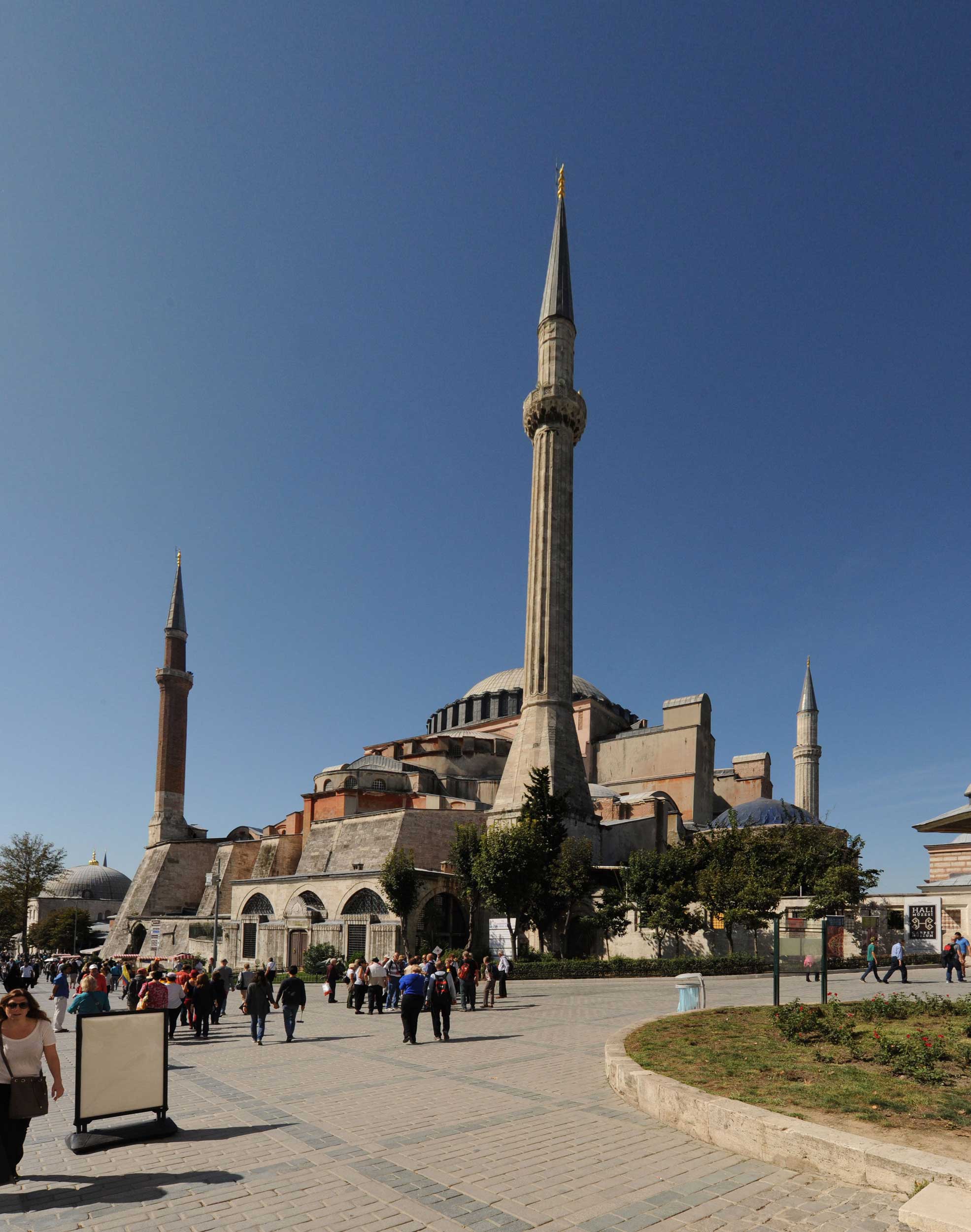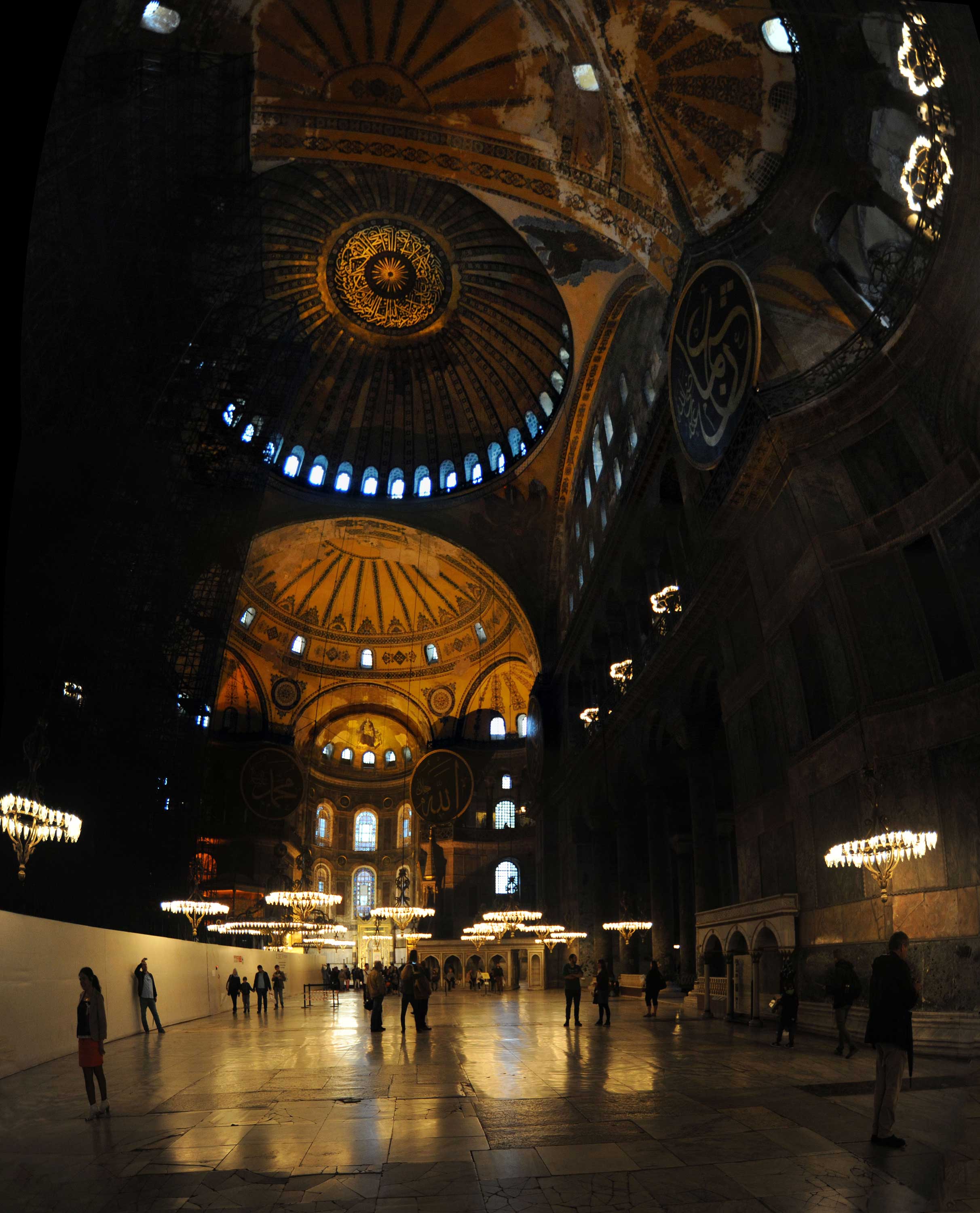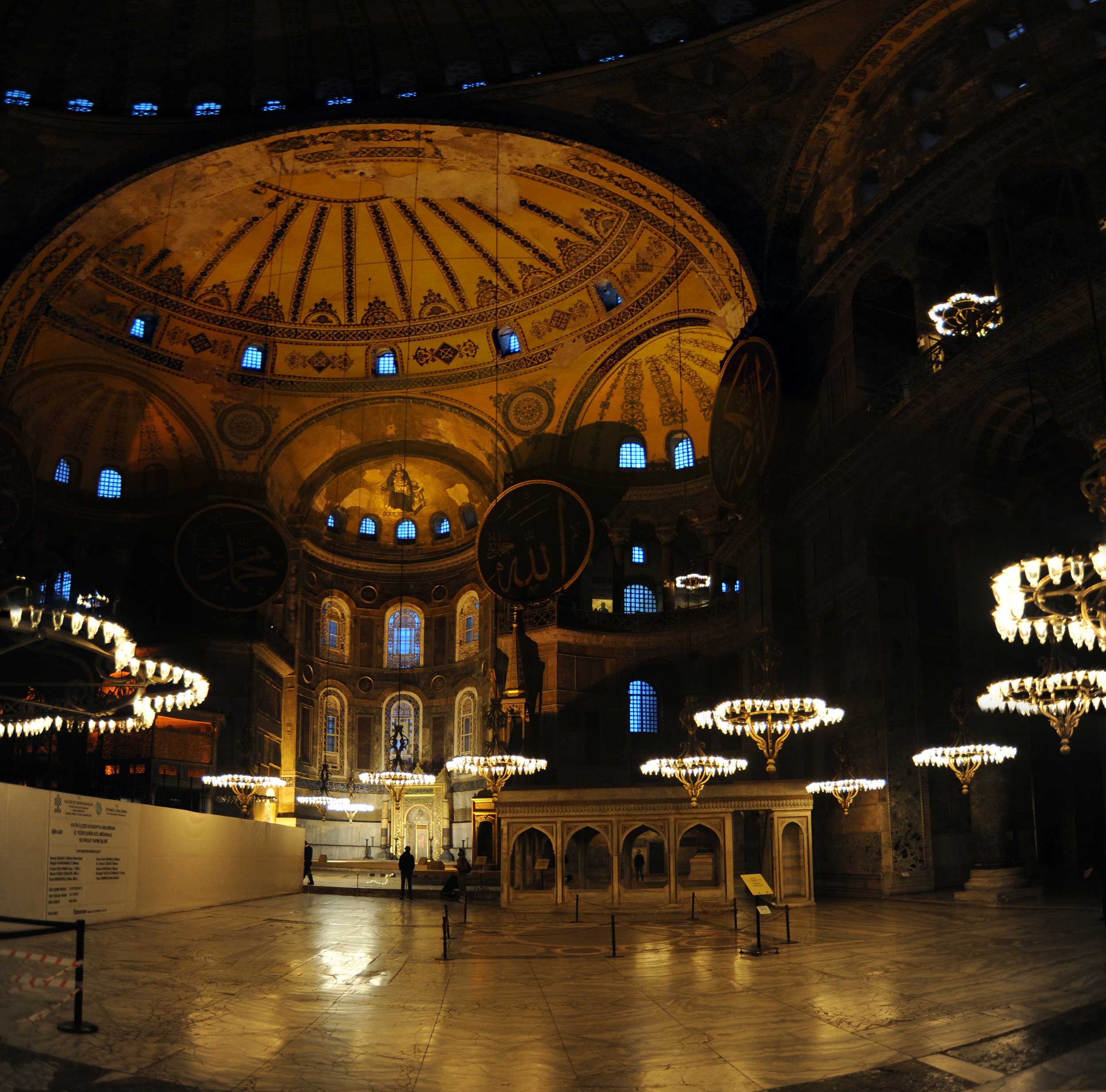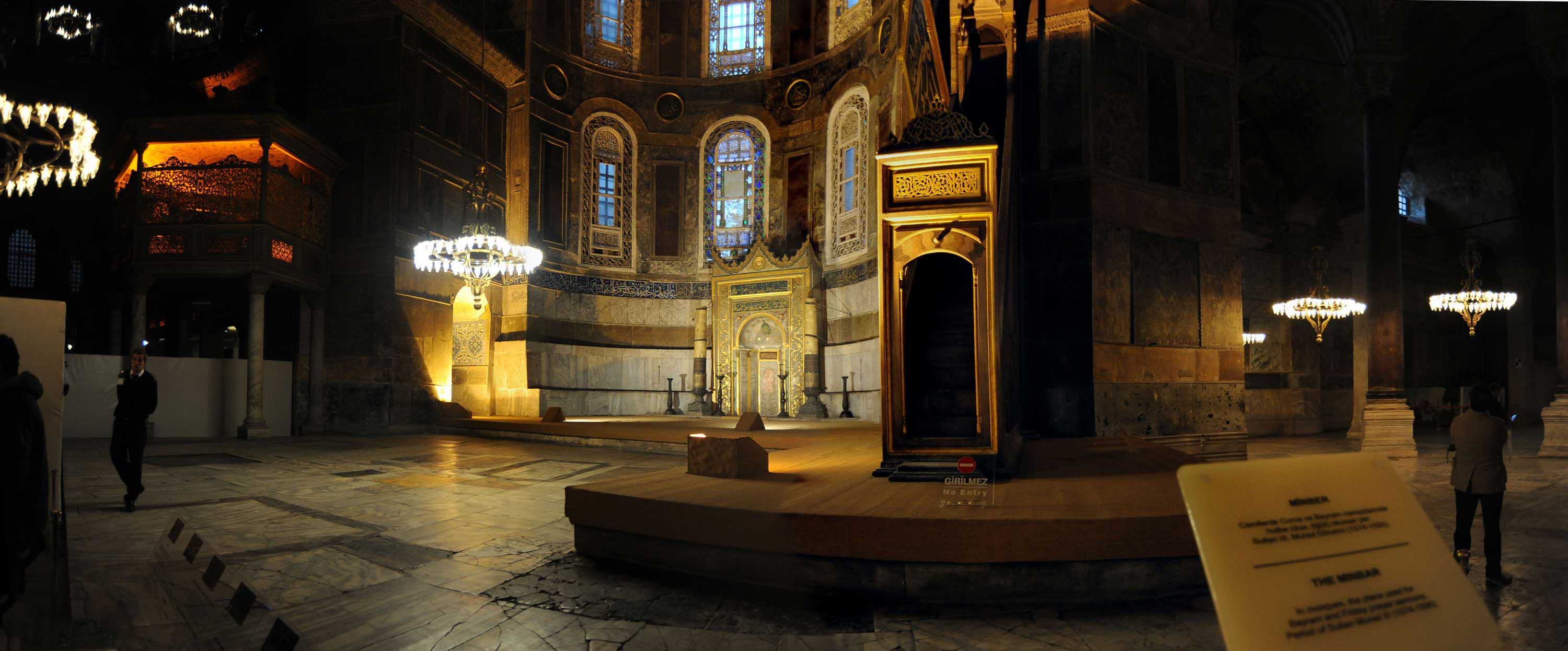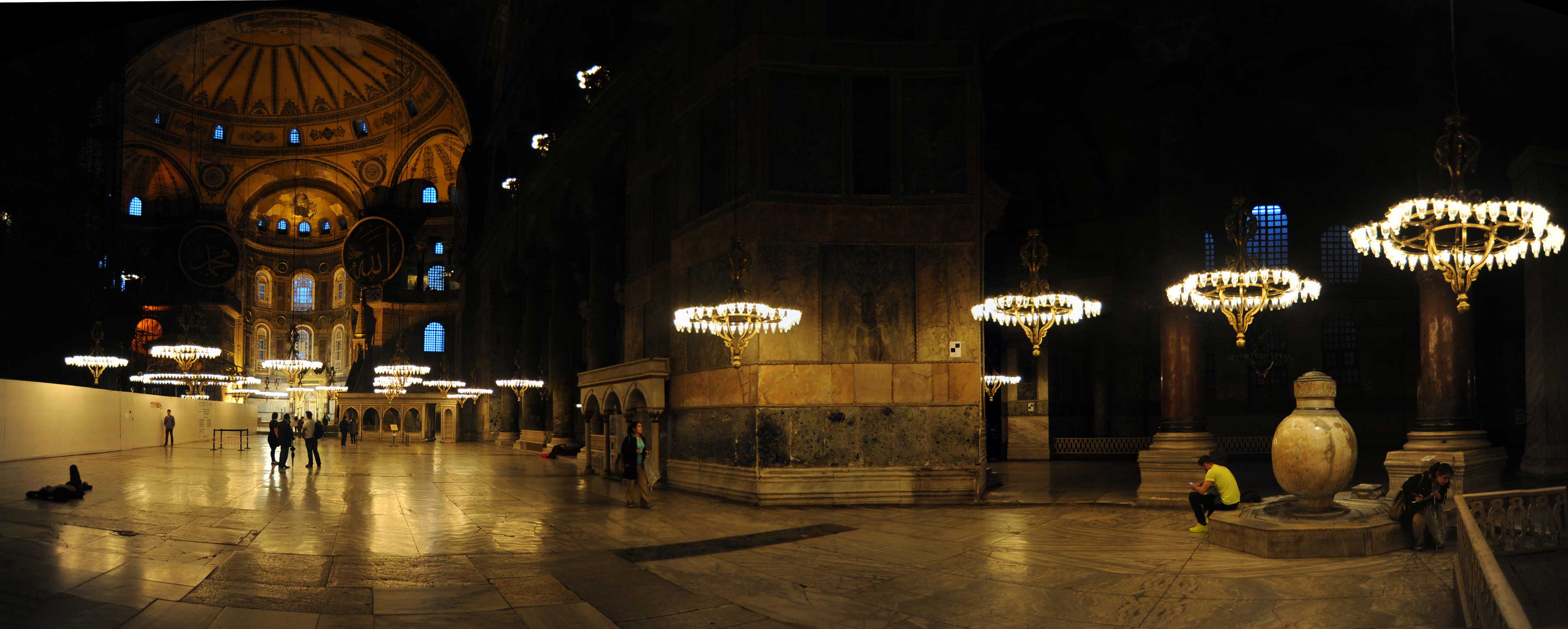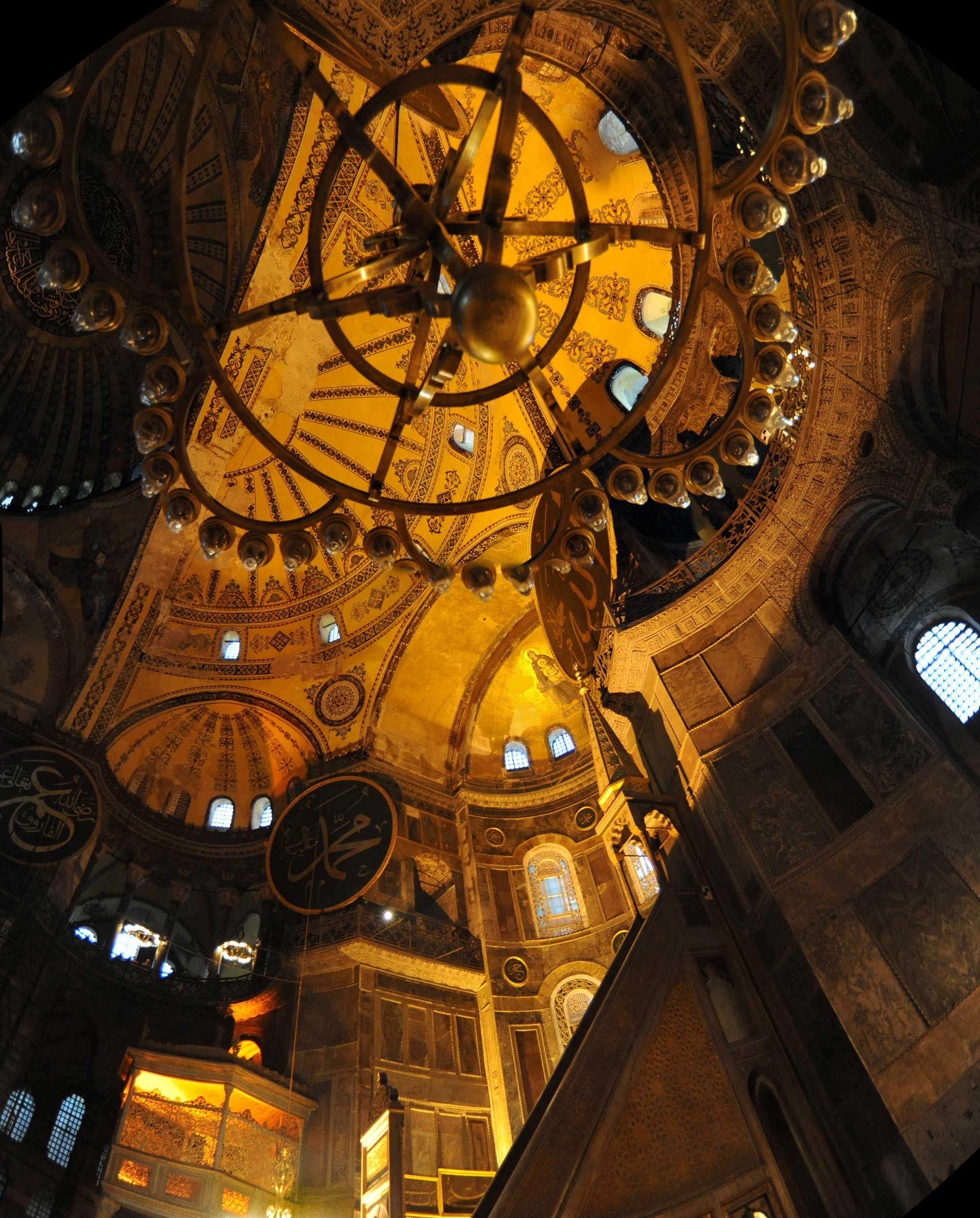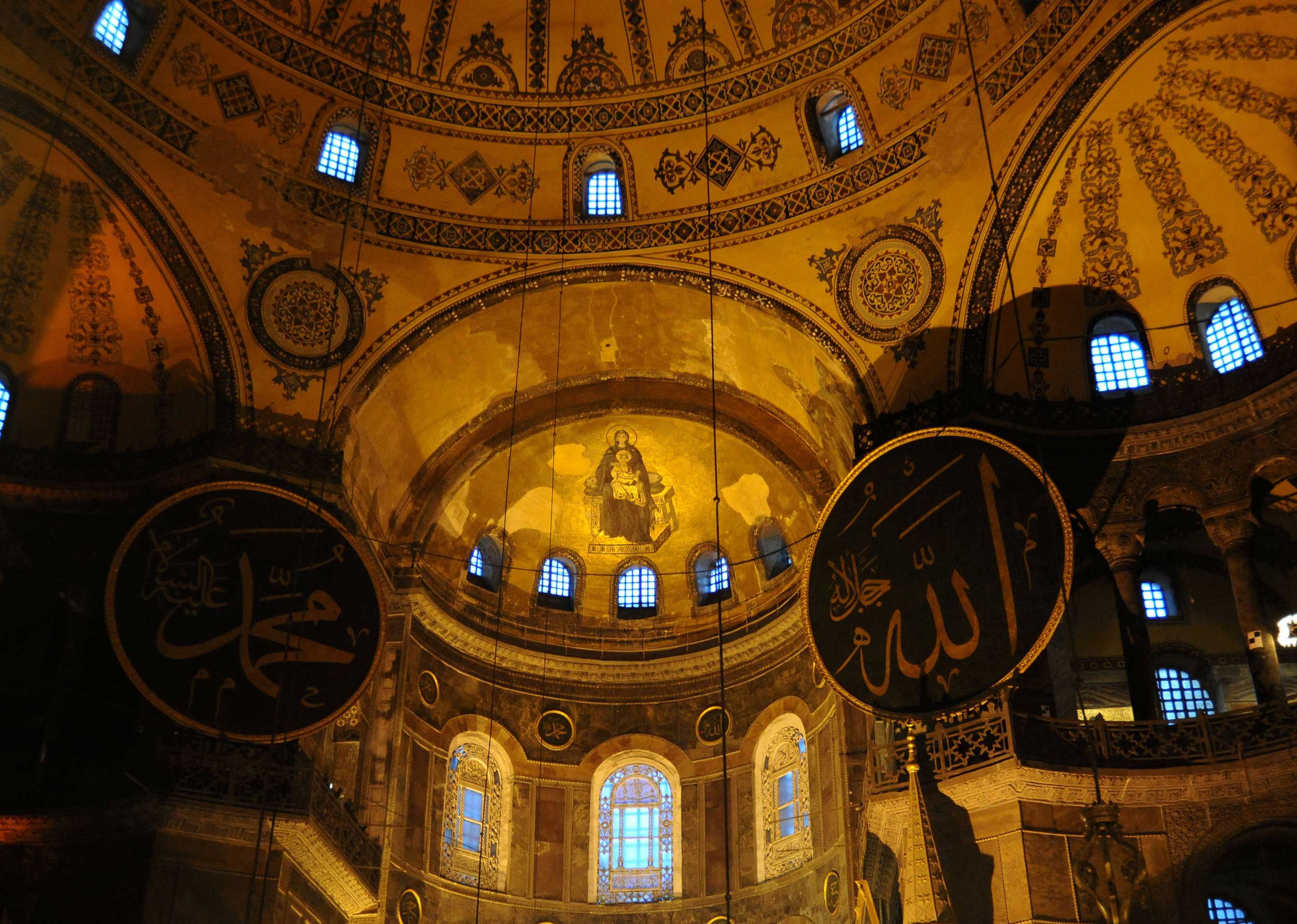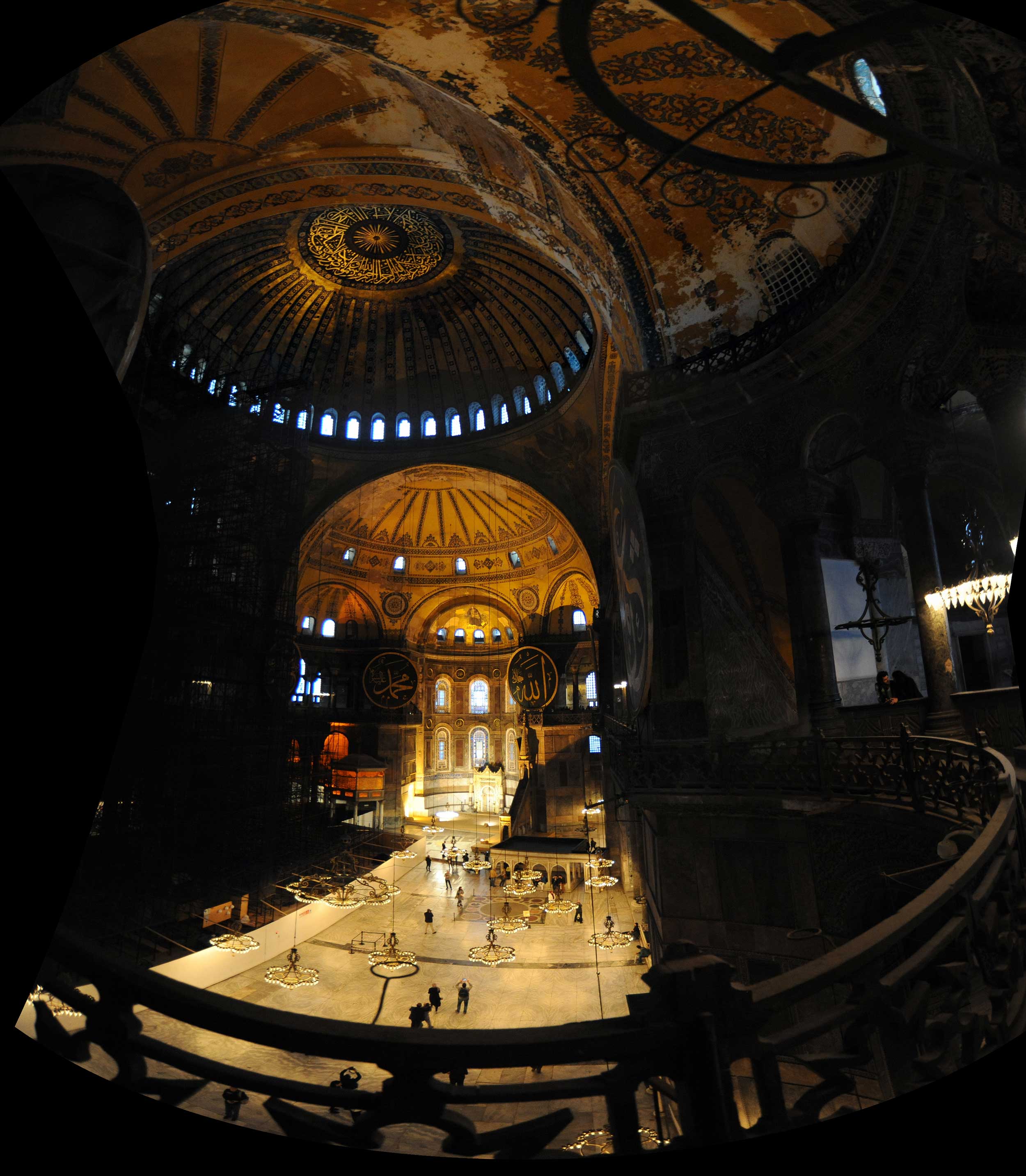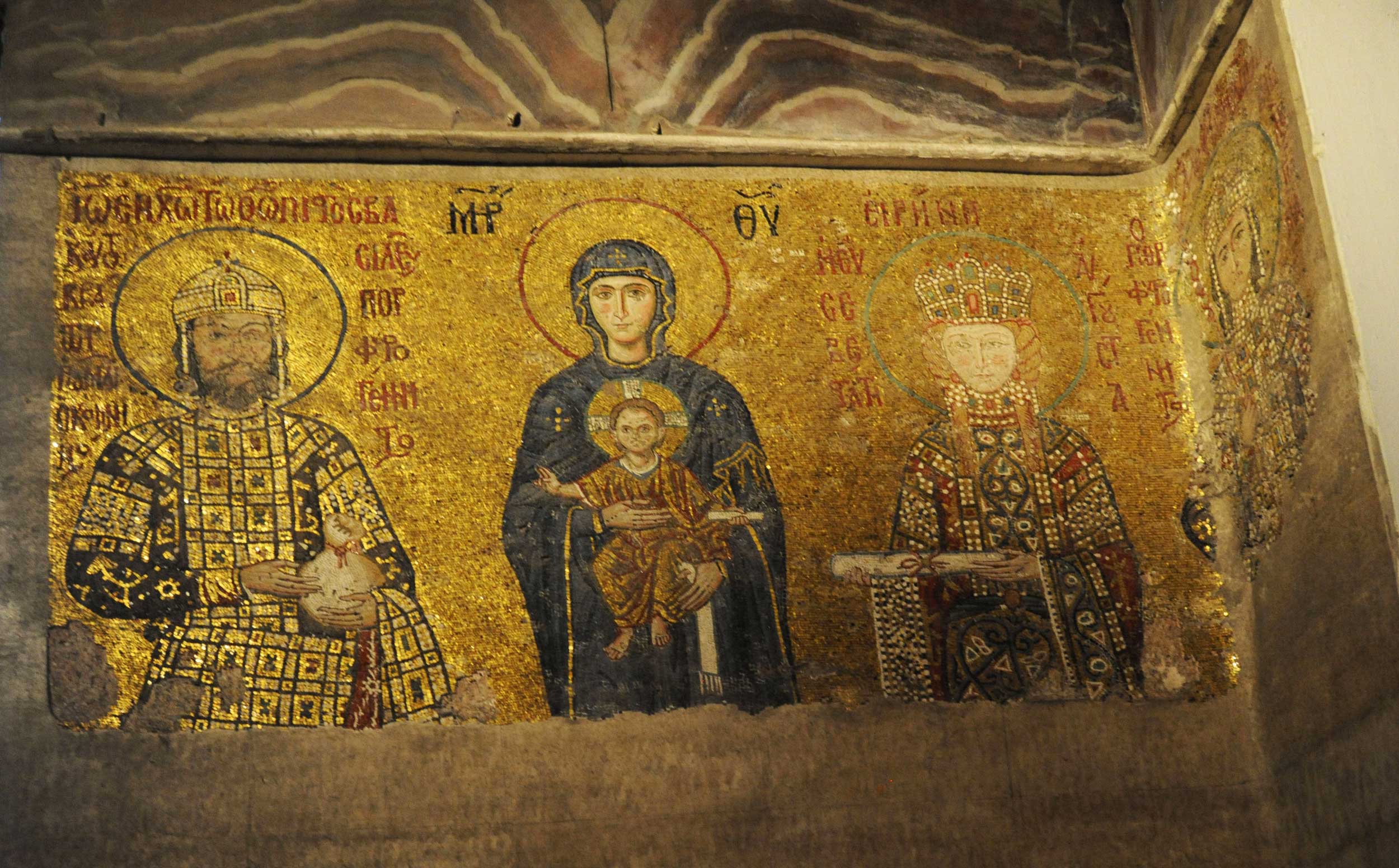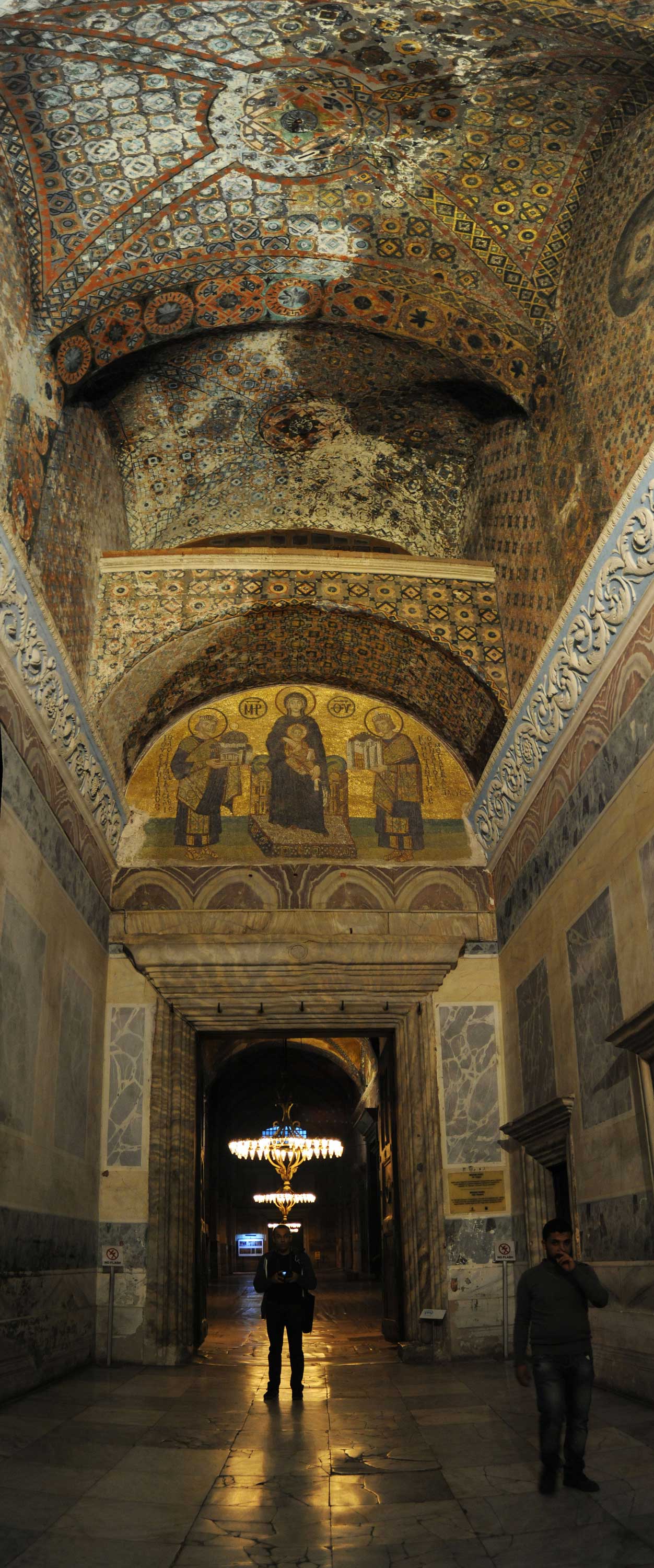The Hagia Sophia Museum
Hagia Sophia dominates the north side of historic Istanbul. The Blue Mosque is on the left (south) side.
Hagia Sophia has a commanding view of the south end of the Bosphorus where it enters into the Sea of Marmara on the right.
The surrounding parks provide a beautiful setting for this historic building.
This building has an amazing history. It was completed in the year 537, after only five years and ten months of construction. Over 10,000 workers were used. The dome reaches 182 feet in height, and has a diameter of 102 feet. There is much speculation as to how such a massive dome was suppored during construction. Regardless, the result was the largest dome structure in the world for over a thousand years, until the cathederal of Seville was completed in 1528. The original structure has been damaged many times by earthquakes, and always rebuilt. Hagia Sophia was originally built as a Orthodox Christian church. In the year 1204 the church became a Roman Catholic cathederal. In 1453 the Ottomans invaded Constantinople and converted Hagia Sophia to a mosque. It remained a mosque until 1935 when the first Turkish President Ataturk transformed the building into a museum.
The main entrance doorway. Christian mosiacs have been restored in many areas after having been plastered over with cement by the Islamists who follow the belief that use of human images is forbidden.
Late evening silence in an almost magic setting.
Virgin Mary and Child over the main altar was added during the 9th century.
The west upper gallery.
Mosiacs still partially covered by cement plaster, awaiting final restoration. This process of removal of the cement takes years of hard work.
A look back at the exit passageway.
On to the Grand Bazaar
Back to Istanbul



